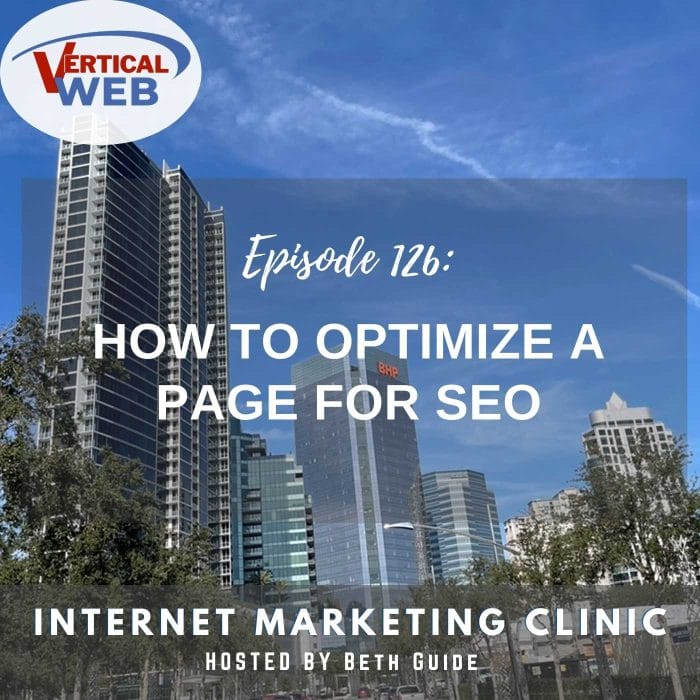Subscribe to Our Podcast Apple Podcasts | RSS
I often hear what I do is voodoo or some kind of magic. That is simply not true. Optimizing for SEO has everything to do with math and common sense more than it will ever be about magic.
So we have some basic steps that we need to follow to do optimization for each page.
Step One: Define Objectives.
Coming off my last topic of Keywords this should be fairly easy to do. Figure out the core words you want to rank on and write them down and put them next to your monitor. They should be the forever guiding principles of how you want to run your website. For us, it is SEO and Web Design and I am going to speak and use those examples throughout. Notice how I just weaved the right words into my blog post.
Step Two: Understanding Your Competition
So maybe this can be defined as one of the most important steps because we need to understand the ecosystem that is the first page of google. So historically the rules were the same for everyone. A certain keyword density and you could bank that it was the same universally. Now the keyword and its usage is very niche-driven. What is the right density for one industry can be completely different from a second industry. It also can change from keyword to keyword and not just industry to industry.
The only way we can learn what it should be is is to understand and observe our competition. So you always take the word you want to rank on and see what the research or the SERP says.
When I take Houston SEO, I can see immediately there is a map. Because that map is there, we will have to change our strategy some, whereas the map will get the lion share of the clicks.
Past that I start to do some math and understand how the competition is using the keyword, how many times does it appear on their pages and how many words are even on a page. For Houston SEO the ranking homepages have in excess of 2500 words. And then I go through each page and understand the dynamics of each of the ranking pages so that I can utilize the topics. It’s a lot of data gathering and fact-finding.
I also am looking at what the competitors have as Title tags.
I use tools like SerpWorx so I can get a good handle on each and every site. I need to understand the word count, the backlinks, and the technical SEO aspects of the page.
I also pick the first 10 non-directory websites to base my research on.
I take the information for each and then create an average and then use that average as the delimiter of how I optimize the page.
Now I do have to take links into consideration with this exercise although link-rich sites usually throw off the average so I do sometimes throw those sites out, just as I would a directory.
Step Three: The Tools
I run the websites through Moz, Screaming Frog, and understand and continue to average out what I should target for the title, word count, and Technical SEO. The slightly being off can be the difference between the first page and the second page.
We are also big fans of RankMath and how that on-page grader can help guide you to the right SEO balance. It is not as detailed as what I am outlining, but it does help guide you through a process and help get you into the right place with things.
Understanding the technical SEO aspects of a page and then what your competitors are doing will help you formulate a great per page strategy that will tell Google what your page is about properly.

- Sign Up for March’s Classes and Enjoy New Topics to Supercharge Your Business Marketing Strategy. - March 10, 2025
- IMCH: Looking ahead to SEO in 2025 - March 5, 2025
- March 2025 SEO Class Schedule - March 5, 2025


